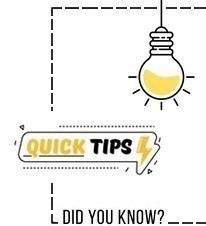Solutions for Plant Detoxification
Plant viruses have a wide range of hosts and can infect a variety of plants such as grain, fruit trees, oilseeds, vegetables, and flowers, which can lead to plant death in severe cases and cause huge economic losses to crops. With the expansion of germplasm exchange, changes in farming systems, and asexual reproduction of virus-bearing materials, plant virus diseases have become more serious year by year.
More than 2,000 species of viruses exist in nature, and more than 600 viruses have been reported to be able to infect plants. Most important cash crops are propagated on a large scale through grafting or cuttings, and if rootstock or parent plants are infected with viruses, this can lead to a short outbreak of the virus, resulting in severe yield reduction. Therefore, how to apply effective measures to prevent and control the occurrence and spread of plant viruses is a research priority for breeders.

Lifeasible understands the importance and necessity of plant detoxification and has expanded its plant detoxification solution on the tissue culture technology platform. We can breed plant detoxification seedlings easily and quickly with significant results without affecting the genetic stability of the plant. We have been widely used in the cultivation of several cash crops, flowering and horticultural plants, garden plants, and medicinal plants, not only to purify and strengthen the plants but also to prevent the occurrence and spread of plant viruses.
Solutions
| Methods |
Details |
| Micro stem tip detoxification |
The micro stem tip detoxification method takes advantage of the uneven distribution of viruses in different tissues and parts of the host plant, where the virus concentration in the root and stem tips of susceptible plants is extremely low, and the closer to the apical meristem, the lower the virus concentration (virus-free zone). Therefore, Lifeasible adopted two methods of virus removal, stem tip culture, and micro stem tip grafting, to obtain virus-free seedlings by using stem tips as explants for tissue culture of the target plants. |
| Heat treatment combined with stem tip detoxification |
The stem tip culture detoxification method has a high detoxification rate and fast detoxification rate, but the survival rate of regenerated plants is low. Since viruses have limited tolerance to high temperatures, Lifeasible uses a combination of heat treatment (hot water immersion and high-temperature air treatment) and stem tip culture to detoxify plants.
Choosing the appropriate stem tip size, appropriate temperature, and treatment time according to different plants is the key to our success in using heat treatment combined with stem tip detoxification, where the temperature and time of heat treatment depend on the passivation (lethal) temperature and plant tolerance temperature of different viruses. |
| Ultra-low temperature detoxification |
Ultra-low temperature detoxification is a method developed based on ultra-low temperature preservation to eradicate viruses by treating virus-infected samples in liquid nitrogen for a short period. Lifeasible can achieve simultaneously in vitro detoxification, rapid propagation, and medium to the long-term preservation of excellent germplasm resources using ultra-low temperature detoxification methods (vitrification, droplet-vitrification, encapsulation-dehydration, and encapsulation-vitrification).
Compared with the traditional micro stem tip culture, the ultra-low temperature detoxification method is more efficient. The stem tips required for effective detoxification using the ultra-low temperature method are somewhat larger than those required for micro stem tip culture, which can still achieve the same detoxification rate, thus alleviating the difficulty of removing smaller stem tips, while the time required to obtain virus-free plants is shorter, which can reduce the input cost of the project. |
| Chemical treatment for detoxification |
The mechanism of action of antiviral agents mainly includes inhibition of virus infestation, inhibition of virus proliferation, and induction of plant resistance. Currently, the chemical agents applied by Lifeasible for plant virus removal include ribavirin, 5,6-dihydrouracil, physcion, moroxydine, chloroisobromine cyanuric acid (CCA), lentinan (LNT), chitosan oligosaccharide (COS), etc.
Some viruses are difficult to remove, and it is difficult to achieve successful detoxification using chemical treatment alone. We often combine chemical treatment with other detoxification methods, including chemical treatment combined with stem tip culture, heat treatment, and low-temperature treatment, respectively. |
You want to sign a confidentiality agreement.
You have a specific plant species for your experimental needs.
You have a reliable and relevant cooperation project to discuss.
You are very interested in our project or have any questions.
You need an updated and detailed quotation.
For research or industrial use.



